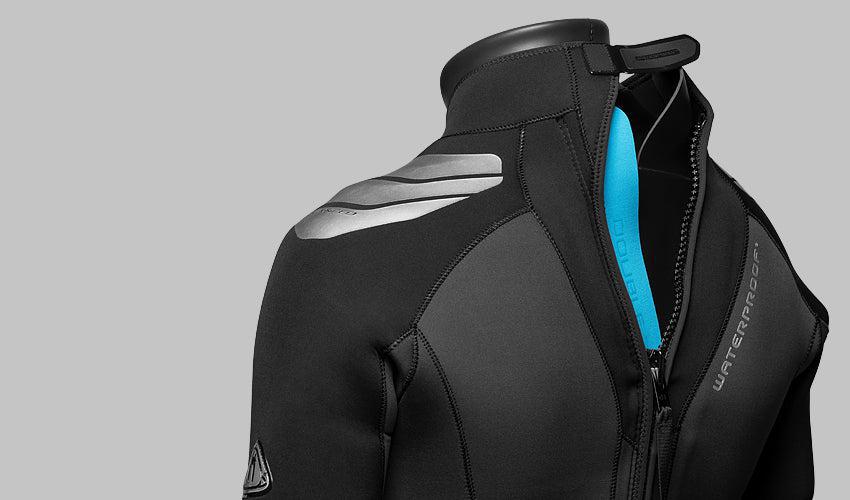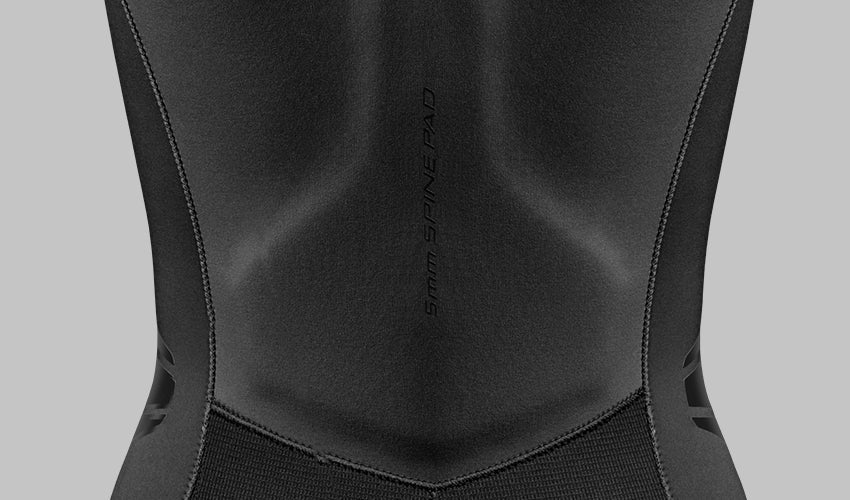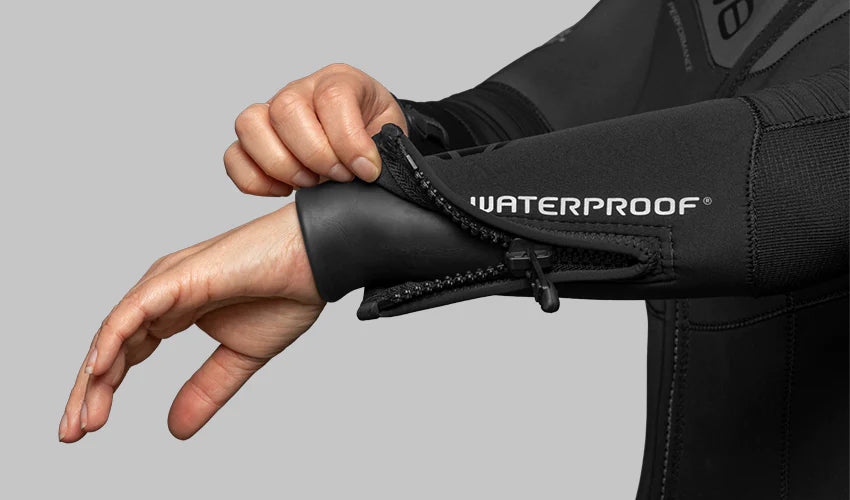Ensuring that your dive wetsuit fits correctly is crucial for both comfort and insulation during your dive. A correctly fitted wetsuit will keep you warm on multiple dives from a liveaboard or while snorkelling off a tropical beach. It will also allow for ease of movement, making it more enjoyable to swim and explore underwater environments.
On the other hand, a poorly fitted wetsuit can detrimentally affect your diving experience. A wetsuit that is too tight may restrict your movements, causing discomfort and reducing your enjoyment of the dive. Conversely, a wetsuit that is too loose risks allowing excessive water to circulate inside the suit, known as 'flushing,' which hastens the loss of body heat and can make you feel colder much quicker. In this blog post, we will provide some tips on how to find the correct size dive wetsuit for your scuba adventures.
How do I know what size wetsuit I need?
Selecting the right size wetsuit is essential to ensure optimal performance and warmth. Ideally, it should fit similarly to a second skin, tightly enveloping your body without being overly constrictive. Make sure the wetsuit is snug enough to form a seal and minimize water entry, but not so tight that it hinders your movement or breathing. Pay special attention to avoiding excess material, particularly in spots such as the armpits, lower back, and behind the knees, as this can lead to chafing and discomfort. A correctly fitting wetsuit will maintain a thin layer of water between the suit and your skin, which is heated by your body, thus aiding in thermal insulation. Read more on our Blog - Tips on how to put on your wetsuit easily

| Water Temperature | Scuba Diving Wetsuit Thickness |
| Over 82.4°F / 28°C | A good UPF rash guard of rash suit |
| 77°F – 80.6°F / 25°C-27°C | Anything between 1mm-2mm Neoskin |
| 71.6°F – 75.2°F / 22°C-24°C | This is 3 mm full wetsuit |
| 62.6°F – 69.8°F / 17°C-21°C | This is approximately 5mm -7mm full suit brackets |
| 50°F – 60.8°F / 10°C-16°C | Area reserved for 7mm but most will dive in semi-dry |
| 41°F – 50°F / 5°C-10°C | We recon anything below 10 is a drysuit area |
| Under 41°F / 5°C | Drysuit |
Factors to consider when choosing the right size wetsuit
There are a few factors to consider when deciding on the correct size wetsuit for your needs. These include:
- Body shape and size: Everyone has a unique body shape, so it's essential to try on different sizes and styles of wetsuits to find what fits best for you. Don't be afraid to ask for advice from an expert at your local dive shop.
- Brand and sizing chart: Each brand may have slightly different sizing charts, so it's essential to refer to the specific brand's chart when choosing a wetsuit. Also, keep in mind that different styles and models within the same brand may have different sizing recommendations.
- Try it on: The best way to determine if a wetsuit fits is by trying it on. Make sure to test all the movements you would typically do while diving.

Tell-tale sign of a correctly fitted wetsuit:
- No excessive pulling around under the armpits. Once you are in your wetsuit, reach up with your arms to check if there is no pulling under your armpits and along the side. Pulling signifies that the wetsuit is too small.
- No pulling around the crotch. Bend to check to see if the wetsuit is not pulling around the crotch. This is a sign of the wetsuit being too short.
- No loose folds formed around the tights, armpits and lower back. Any excessive folding will encourage water flashing, and you will be getting cold.
- No stress points restricting your movements. While fitting, practice a few movements you typically make when surfing or participating in your desired water sport. Check if there is any area where the wetsuit restricts your movement or feels uncomfortable.
- No excessive stretching around the neck and wrists. The collar should be snug without being too tight, while the wrist seals should sit smoothly against your skin without feeling too tight or loose.

Is it better to size up or down in dive wetsuits?
When choosing between two wetsuit sizes, particularly if you find yourself at the upper end of one size bracket or in between sizes, it is generally recommended to size up. Wetsuits are inherently designed to fit snugly, with the intention of creating a second-skin effect without restricting mobility. Opting for the larger size accommodates your body's need for flexibility and comfort, especially important during extended periods of activity in the water. Additionally, a slightly larger wetsuit can better adapt to minor changes in a user's body size than one that is too tight. It is always better to have a wetsuit that fits comfortably and allows for full freedom of movement, rather than one that restricts your range of motion. Remember, a well-fitting wetsuit will not only keep you comfortable but also help maintain proper thermal insulation, making sure you can enjoy your time in the water without getting too cold. Overall, the best wetsuit is one that fits you perfectly and allows for unrestricted movement in the water. Don't be afraid to try on different sizes and brands to find the best fit for your body type. And always remember, a snug but comfortable wetsuit will make the dive a better experience.

Wetsuits feel tighter when dry and out of the water
It's important to understand that wetsuits will always feel tighter when you're not in the water and a little looser once it fills with water – this is by design. The slight expansion that occurs in water is accounted for by manufacturers and is essential for the suit's insulating properties. Before you dive or engage in any watersport, it’s also crucial to know how to care for your wetsuit to ensure its longevity and optimal performance.
Rash Vests & Skin Suits | 2-3mm Thick Wetsuits | 5mm Thick Wetsuits | 7mm+ Thick Wetsuits
Front zip vs back zip diving wetsuits
One of the foremost advantages of back zip wetsuits is the ease of entry they offer. Due to the extensive opening provided by the zipper running down the back, wearing and removing the suit becomes less troublesome, especially for those new to wetsuit use. Individuals can enjoy a bit more room to manoeuvre, which can be particularly beneficial for broader body types. However, the placement of the zipper means it can be slightly more challenging to reach and secure without assistance. By contrast, while front zip wetsuits may present a snugger fit, they afford users the independence of zipping themselves in and out with greater ease.
Unlike back zip wetsuits, many front zip variants feature a closure that halts at the sternum. This design significantly reduces the amount of neoprene material encircling the neck, thereby decreasing the likelihood of a wearer feeling restricted or experiencing discomfort in this crucial area, which is especially beneficial during long periods in the water. Secondly, front zip wetsuits are renowned for their convenience. The design enables wearers to handle the zip without assistance, providing a hassle-free experience when putting on or taking off the suit. This independence is a considerable advantage for solo divers or for those who prefer not to rely on others to secure their gear.

In conclusion, the key to finding your best-fitting diving wetsuit involves starting with your basic measurements followed by trying on different suits to ensure a correct fit. A properly fitting wetsuit should fit snugly, akin to a second skin, but without inhibiting your range of motion. Pay close attention to potential stress points, make sure no excessive folding occurs, and allow for a fit that feels comfortable both in and out of the water. Never underestimate the importance of a well-fitting wetsuit, as it directly impacts both your comfort and the effectiveness of the suit's insulating properties. Take your time, don't rush the process, and you'll be rewarded with a wetsuit that enhances, rather than detracts from, your diving adventures.








